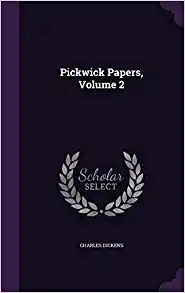Reading Level
What is the reading level of The Pickwick Papers by Charles Dickens - Delphi Classics ?
Analysing the books in the series, we estimate that the reading level of The Pickwick Papers by Charles Dickens - Delphi Classics is 8th and 9th grade.
What age is The Pickwick Papers by Charles Dickens - Delphi Classics suitable for ?
Readers of age 10 - 18 years will enjoy The Pickwick Papers by Charles Dickens - Delphi Classics .
Expert Readability Tests for
The Pickwick Papers by Charles Dickens - Delphi Classics
| Readability Test | Reading Level |
|---|---|
| Flesch Kincaid Scale | Grade 9 |
| SMOG Index | Grade 0.0 |
| Coleman Liau Index | Grade 8 |
| Dale Chall Readability Score | Grade 11 |
Reading Time
8 hrs 1 mins
How long to read The Pickwick Papers by Charles Dickens - Delphi Classics (Illustrated) (Delphi Parts Edition (Charles Dickens) Book 2)?
The estimated word count of The Pickwick Papers by Charles Dickens - Delphi Classics (Illustrated) (Delphi Parts Edition (Charles Dickens) Book 2) is 120,125 words.
A person reading at the average speed of 250 words/min, will finish the book in 8 hrs 1 mins. At a slower speed of 150 words/min, they will finish it in 13 hrs 21 mins. At a faster speed of 450 words/min, they will finish it in 4 hrs 27 mins.
| The Pickwick Papers by Charles Dickens - Delphi Classics (Illustrated) (Delphi Parts Edition (Charles Dickens) Book 2) - 120,125 words | ||
|---|---|---|
| Reading Speed | Time to Read | |
| Slow | 150 words/min | 13 hrs 21 mins |
| Average | 250 words/min | 8 hrs 1 mins |
| Fast | 450 words/min | 4 hrs 27 mins |
- Authors
More about The Pickwick Papers by Charles Dickens - Delphi Classics
120,125 words
Word Count
for The Pickwick Papers by Charles Dickens - Delphi Classics (Illustrated) (Delphi Parts Edition (Charles Dickens) Book 2)
476 pages
Pages
12 hours and 55 minutes
Audiobook length
Description
This work has been selected by scholars as being culturally important, and is part of the knowledge base of civilization as we know it. This work was reproduced from the original artifact, and remains as true to the original work as possible. Therefore, you will see the original copyright references, library stamps (as most of these works have been housed in our most important libraries around the world), and other notations in the work. This work is in the public domain in the United States of America, and possibly other nations. Within the United States, you may freely copy and distribute this work, as no entity (individual or corporate) has a copyright on the body of the work.As a reproduction of a historical artifact, this work may contain missing or blurred pages, poor pictures, errant marks, etc. Scholars believe, and we concur, that this work is important enough to be preserved, reproduced, and made generally available to the public. We appreciate your support of the preservation process, and thank you for being an important part of keeping this knowledge alive and relevant. Read more
